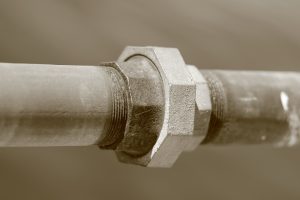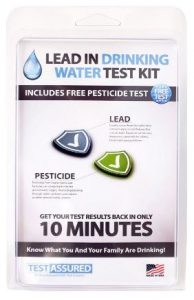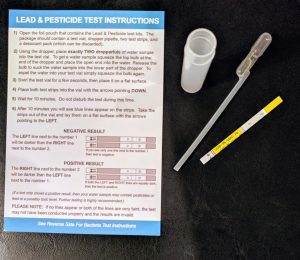
Lead in Drinking Water
Lead in drinking water has made headline news for the past few years because it can cause a number of health issues. Ingesting lead is particularly dangerous to infants, children, and pregnant and nursing mothers. We often take for granted the quality of our water, assuming that government regulations are followed to keep us safe.
The amount of lead in our drinking water is of particular concern to politicians, parents, and everyone in this country. The Center for Disease Control (CDC) and the Environmental Protection Agency (EPA) work together to set and enforce allowable limits of lead in our water. When there is an excess of lead in the water, we must be prepared to reduce it.
Lead Poisoning is an Ongoing Issue
Lead in the water has been an issue for a very long time in the United States. As early as the late 1800s, people realized that lead pipes were causing serious illnesses. Governments of several cities began to restrict or even prohibit the use of lead pipes in the 1920s. However, the lead industry fought back by launching a campaign to encourage the use of lead pipes. They spoke to various organizations and federal officials to explain why lead pipes were superior to any alternative. Although the lead industry resisted the restrictions on lead pipes, more legislation was past to reduce their use over the years.
Most recently, the outcry over unsafe levels of lead in drinking water has made its way to the news outlets. The city of Flint, Michigan decided to switch its water source from Lake Huron to the Flint River. Unfortunately, pollution in the Flint River caused lead pipes to corrode. This led to an unacceptable amount of lead in the city’s municipal water supply.
While this may sound like a rare occurrence, lead contamination in water is more common than many people realize. The attention brought to the situation in Flint caused other cities and residents to test their water supplies, revealing many more cases of water supplies with high lead levels. Even though your city may not be in the news like Flint, there could still be more lead in your water than is safe for you to drink.
How Lead Gets into Your Water
If your home has lead pipes, lead can seep into the water as it runs through deteriorating or corroding pipes. Corrosion occurs when a chemical reaction takes place between the plumbing and the water. This causes the metal to wear away and seep into the water as it flows through the pipes.
The amount of lead that ends up in the water depends on several things. For example, water with a high concentration of certain minerals tends to absorb more lead than water lacking minerals. If water remains within your pipes for a long period of time, the water will pick up more lead than flowing water. Another factor is the age and condition of your pipes. Older pipes have more deterioration which means more lead may move from the pipes into the water. The temperature is also a factor as hot water tends to have more lead than cold water. If you have concerns about lead, it is better to use the cold water tap for drinking and cooking.
Dangers and Health Effects of Lead
Children are particularly vulnerable when it comes to lead. The metal may not cause serious harm to an adult, but fetuses, babies, and children can suffer lasting damage from even low levels of lead exposure. Lead damages the peripheral and central nervous systems causing learning disabilities. Children affected by lead also tend to be shorter than other children and may have trouble with their hearing. Most alarmingly, lead causes blood cells to become deformed, preventing the cells from functioning properly.
Children who are exposed to lead tend to have lower IQs than their peers. They may also suffer from behavior problems, particularly hyperactivity. In many cases, lead poisoning can cause anemia. Although it is rare, children exposed to lead can experience seizures that lead to comas, and possibly death.
A pregnant woman who drinks water with high levels of lead may have lead in her system before she becomes pregnant. The lead that she has ingested over her lifetime is stored in her bones. When the calcium is released to help form the bones in the developing fetus, the lead from her bones goes with it. Lead can also reach the fetus through the placenta.
Excessive amounts of lead in the mother’s body can stunt the growth of the fetus. It can also cause a woman to deliver prematurely or to have a baby with low birth weight. While breastfeeding, the baby can still receive lead from the mother through her breast milk. Formula fed babies may be getting lead from affected water mixed with the formula. All of this exposure to lead during gestation and after birth can cause serious brain damage and developmental issues.
Although adults are not as susceptible to the negative effects of lead as children are, they can still experience some undesirable effects. Adults exposed to lead can suffer from hypertension, gastrointestinal problems, and kidney damage. Both men and women can experience reproductive problems because of lead exposure.
How to Test for Lead in Water
Lead is an invisible, odorless, and tasteless contaminant. The only way to know if your water contains high levels of lead is to test it. If you know that your home has lead pipes, you should test your water regularly to determine how much lead is leaching into your water. The lead used in pipes is very soft, and it can easily break down and end up in your water. Even if you have non-plastic pipes, that does not mean that your water is safe. If your non-plastic pipes were put in place before 1986, you will need to have your water tested as well.
Every community has a drinking water authority that is governed by the state or the city. When contacting your water authority, you should ask if the service connector that supplies your home with water is made of lead. This agency can also give you a list of laboratories that will be able to test your water for lead. The test can cost anywhere from $20 to $100.
Home Testing for Lead
Water testing does not have to be done by a laboratory. Home testing is typically cheaper and provides you with faster results. Home testing kits can be purchased from your local hardware store or an online vendor.
TestAssured’s Lead in Drinking Water Test Kit allows you to test your water quickly to make sure it does not contain unsafe lead levels. The kit is calibrated to the EPA standard for allowable lead. You can compare your results with the EPA recommendations and guidelines for water quality limits.
 To perform the lead test:
To perform the lead test:
- Use the dropper pipette to place exactly TWO dropperfuls of your water sample into the test vial.
- Swirl the test vial for a few seconds, then place it on a flat surface.
- Place the test strip into the vial with the arrows pointing DOWN.
- Wait for 10 minutes.
- After 10 minutes, remove the strip from the vial, lay it on a flat surface and review the instruction card to determine if your result is positive or negative.

If the test strip shows a positive result, then your water sample may contain lead at a possibly toxic level. Further testing is highly recommended.
What Are the Safe Levels of Lead in Your Water?
The EPA has set a goal for the amount of lead that should be in the water, and that amount is zero. EPA officials don’t believe that any amount of lead is safe for human consumption. Lead at all levels is considered toxic to humans because it remains in the body and can accumulate to harmful levels.
Although the goal is zero lead in drinking water, the EPA has determined the allowable level of lead in water is not to exceed more than 15 parts per billion. Any amount higher than that requires immediate action.
Understanding Lead Levels
| Lead in Parts Per Billion | What the Numbers Mean |
|---|---|
| 104 PPB TO 13,200 PPB | Levels of lead in parts per billion in the tap water of a home in Flint, MI, in early 2014. |
| 40 PPB | Level listed on EPA website from 2002 to 2004 as posing an “imminent and substantial endangerment to the health of children and pregnant women.” |
| 27 PPB | In Flint, MI, more than 10% of first draw tap water samples tested by Virginia Tech scientists contained at least this much lead. |
| 18 PPB | For infants fed formula reconstituted with tap water, this level was estimated in a study to result in 50% of exposed children having blood-lead levels above the current CDC level of concern. |
| 15 PPB | EPA “action level” for water systems to assess corrosion control. |
| 5 PPB | Maximum lead contamination allowed by the FDA in bottled water. Considered a level posing health concerns by some scientists. |
| 0 PPB | Non-enforceable EPA maximum-contaminant-level goal for lead in drinking water. |
How to Remove Lead if Your Water Tests Positive
There are several things you can do if your water tests positive for lead. Depending on the age of your home, your plumbing may consist of lead pipes. If so, consider replacing your plumbing with lead-free pipes. In the meantime, you can attach a filter to your kitchen faucet for cooking and drinking water. When you are choosing a filter, look for one that is certified and intended to remove lead. You can contact the Water Quality Association for a list of filters that have received the proper certification. Once your new filter is in place, make sure to follow the manufacturer’s instructions on how to care for the device. Other alternatives include buying bottled water and flushing your pipes by running the water for a few minutes before using the water.
Test Your Water for Lead Regularly
Although the government sets guidelines for an allowable amount of lead in the water, this doesn’t mean that our water is guaranteed to be safe. Lead levels can change from the time the water leaves the source and travels to our faucets. Many factors can impact how much lead is in the water at individual residences. The only way to know for sure how much lead is in your water is to test it at least once a year. Know what’s in your water, test it today!
